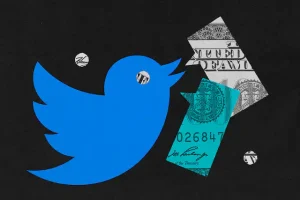
On the morning of International Women’s Day, Francesca Lawson and Ali Fensome’s Twitter account @PayGapApp had just about 2,000 followers.
The couple created the account last year to monitor government data on gender pay gaps in companies in the UK and call them out on Twitter.
Fensome, a software developer built the account as a bot to perform the function stated in its Twitter bio: ‘Employers, if you tweet about International Women’s Day, I’ll retweet your genders pay gap’.
At the close of work on Tuesday, @PayGapApp had acquired over 120,000 followers. It had spent the better part of the day sending out hundreds of tweets calling out companies and exposing information about their median gender pay gaps.
Social media users lauded the effort. One Twitter wrote ‘We need more public accountability— it’s the only way change is going to happen.’
Lawson believes the sudden popularity of the account is a reflection of the growing demand for accountability and transparency who publicly speak out against inequalities but still discriminate in their own workplaces.
‘You can’t say that you’re doing really well for equality if you’ve not got the numbers behind you to support it,’ a travel writer tweeted. ‘We don’t want to see nice headshots of your female employees. We don’t want to see panel discussions that you’re running. We want you to tell us how you’ve identified your problems, what you’re doing to fix them, and if you have something to shout about, if you’re doing really well— well, show us the data.’
The UK government has mandated companies with over 250 employees to submit yearly reports on their gender pay gaps based on payroll data since 2017. According to the Office for National Statistics, in 2020, the gender pay gap among all median hourly employees was 15.5%.
According to the American Association of University Women, in 2020, women in the US on average earned 83% of what men earned. The gap was even larger based on racial lines, with Black women being paid 64%, Latina women being paid 57%, Asian American women being paid 85% and Native American women being paid 60% of what white, non-Hispanic men were paid in 2020.
Airline company, Ryanair appeared to have one of the worst pay gaps that the bot called out.
‘In this organization, women’s median hourly pay is 68.6% lower than men’s’, tweeted the bot over a graphic poster the airline company created referring to a selection of its women employees as ‘the Flight Squad’.
A spokesperson for the company attributed the pay gap to the fact that most UK pilots were men, and reiterated the historical underrepresentation of women as pilots throughout the entire industry.
Lawson said, ‘We wanted to use this data to put it back in the spotlight in order to make people aware of the kind of challenges still going on and start conversations about trying to fix them.’
According to Lawson and Fensome, some accounts blocked @PayGapApp in response to the tweets. Others noted that women made up the majority of workers in lower-paid roles. For some companies, they highlighted where women’s median hourly pay is higher than or equal to men.
According to a 2020 report by the National Women’s Law Center, employers and governments can reduce the pay gap by increasing minimum wage, creating opportunities for women to be promoted in organizations, providing childcare and paid maternity leave and supporting pay transparency among workers.
Lawson, a freelance copywriter and social media manager came up with the idea after seeing companies ‘filling up social feeds and inboxes talking about events that they’re running’ for International Women’s Day, she said.
‘I had just started to feel really disheartened because a lot of it is not backed up with any long-term action to improve gender equality,’ she added.
Lawson brought the idea to Fensome on March 6th and he began working on the bot. Fensome said ‘I was a bit shocked about how few people actually knew about this amazing data.’
What followed were ‘about two days of frantic coding, data analysis, bug fixing, sort of ad hoc testing and late nights,’ said Fensome.
His code lets the bot scan Twitter accounts for some keywords and hashtags associated with International Women’s Day and matching the accounts to data from the government database.
Fensome and Lawson launched the bot on Fensome’s laptop last year’s International Women’s Day, which meant they could only leave it running for the day. This year, it’s running on Amazon Web Services. The couple plans to allow the account run through the end of the week.
‘In an ideal world, we wouldn’t need an International Women’s Day, because we’d have total gender parity,’ Lawson said.
‘We have got some ideas for things to do next year,’ Fensome said, ‘but we’ve got to keep some of it under wraps.’
By Marvellous Iwendi.
Source: The Washington Post